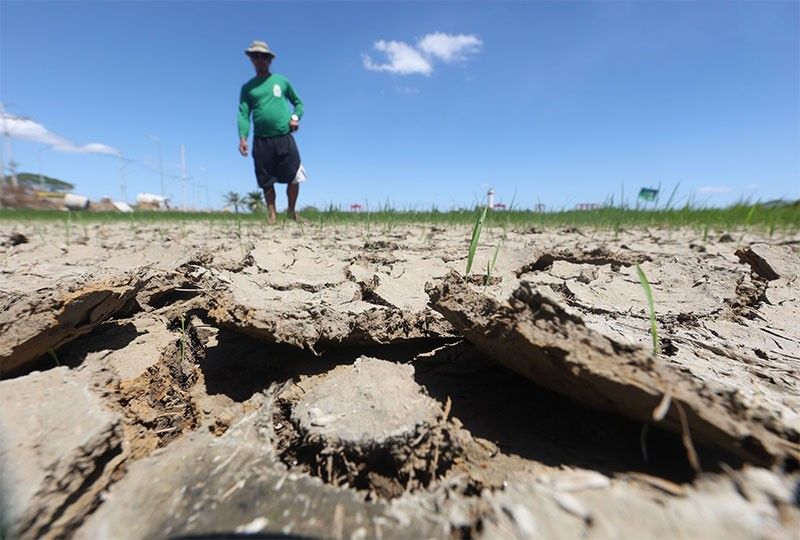No nationwide state of calamity over El Niño – Marcos

MANILA, Philippines — While all regions in the country have been hit by the dry spell due to El Niño, the government is not looking at placing the entire country under a state of calamity yet, President Marcos said yesterday.
Speaking to reporters in Bacolod City, Marcos said the whole Philippines is expected to experience the impact of the warmer and drier conditions, but in varying intensities.
Marcos, recognizing that the problem is already being experienced in several areas, pointed out that the government must implement multiple responses.
“It (government’s response) shouldn’t be just a shotgun, one size fits all. So we look at each area and see what it is that they need. So that’s what we are, that’s the way we are handling the local state of calamity that the local governments are declaring,” he said.
“The truth is, everyone is affected,” he added, noting that those in the western side of the country were the ones badly hit by El Niño. “But the other areas, although they are affected, they’re not that critical.”
The government, Marcos said, is carrying out different approaches in addressing the effects of El Niño, which is expected to persist until May, including the construction of more dams, improvement of irrigation system and use of new planting techniques.
Around 80 provinces are expected to be hit by the dry spell by the end of April, according to the Task Force El Niño. Cebu and Zamboanga cities have already declared a water crisis due to the effects of El Niño.
The Department of Labor and Employment (DOLE) recently reminded employers regarding Labor Advisory 8 Series of 2023, which recommends various measures to avoid heat stress, including reducing extreme heat exposure of employees through adequate ventilation and heat insulation in workplaces, adjustments in rest breaks and work locations, use of personal protective equipment and access to hydration.
It earlier said workers could opt not to report for work to avoid the scorching heat, although they would not get paid for the day.
But for those who brave the heat to keep the economy running, Sen. Jinggoy Estrada suggested giving them additional incentives or benefits as he called on employers to exercise compassion and understanding during extreme weather conditions.
“Providing additional incentives or benefits to those who brave the heat to keep our economy running during weather disturbances is fair and shows our commitment to their well-being,” said Estrada, who chairs the Senate committee on labor.
Estrada said he appreciated the flexibility provided by DOLE Advisory No. 17-2022, which may apply to some workers who have comorbidities as the scorching heat may pose a risk to their health and safety at work.
At the House of Representatives, Rizal 4th District Rep. Fidel Nograles urged employers to heed the recommendation of the DOLE to protect their employees from heat-related stress.
“As we always say, prevention is much better than cure. Perhaps it would be best and practical for any organization to focus on the occupational safety of employees rather than address effects of negligence that may result in productivity loss, accidents and the like,” Nograles said. “Let us be reminded that our workers’ health and welfare results to productivity gains for the organization.”
Gabriela Women’s party-list Rep. Arlene Brosas also sought the imposition of mandatory special breaks from work in times of severe heat and asked the Marcos administration to release an executive order mandating these “heat breaks,” along with other safety measures to protect workers across all sectors.
Heat index
Meanwhile, the heat index in Daet, Camarines Sur on Sunday reached a “dangerous” level of 46 degrees Celsius, the Philippine Atmospheric, Geophysical and Astronomical Services Administration (PAGASA) said.
It noted, though, that the highest heat index recorded during the Holy Week was at 47 degrees Celsius in Dagupan City, Pangasinan on March 27 and in Aparri, Cagayan on March 29.
This “dangerous” level of heat index, according to PAGASA weather specialist Benison Estareja, will continue to be felt in the country.
“It is possible that some areas could experience dangerous levels of heat index. Heat index between 42 and 43 degrees Celsius is expected in Cagayan; Pili, Camarines Sur; Oriental Mindoro and a big portion of Palawan,” Estareja said in a radio interview.
“Heat stroke is possible with the continued exposure to the sun in these areas. We advise the public to bring umbrella, drink a lot of water if they need to go out,” he said.
Also in the dangerous heat index level are Aparri in Cagayan and Cotabato City (44 degrees Celsius); Dagupan City in Pangasinan and San Jose, Occidental Mindoro (43 degrees Celsius); Tuguegarao City in Cagayan, Puerto Princesa City and Aborlan town in Palawan; Roxas City and Zamboanga City (42 degrees Celsius).
For Metro Manila, Estareja said the heat index could reach as high as 39 degrees Celsius.
“There is a low chance of rain in areas of Northern and Central Luzon in the next few days while rains are expected in Eastern Visayas and Mindanao,” he said. — Delon Porcalla, Cecille Suerte Felipe, Sheila Crisostomo, Bella Cariaso, Emmanuel Tupas
- Latest
- Trending




























